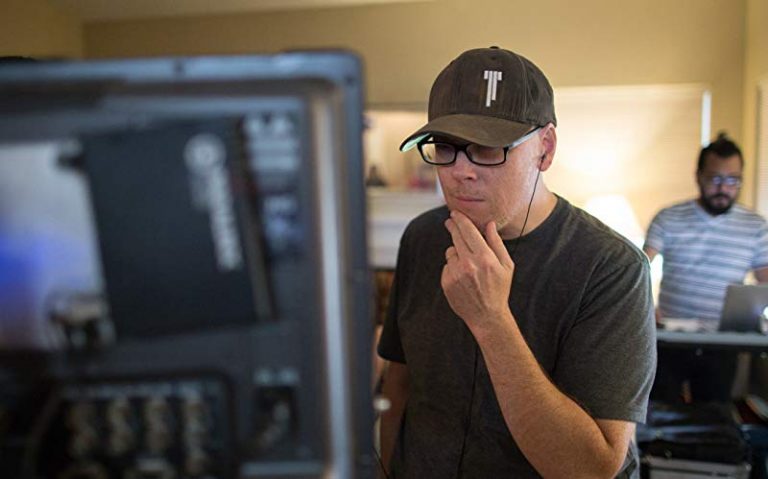Not All Great Books Make Great Movies
When it comes to turning dark and gritty crime fiction into marketable movies, it’s not as easy as just picking a great novel and watching the box offices money pour in. The genre is littered with just as many misses as hits, but if they’re both starting from great source material, what’s the difference? With his The Lagotti Family series, author Leopold Borstinski has experience writing these types of books and was willing to share his thoughts as to what turns one film adaptation into a classic and leaves another completely forgotten.
A man stands in the office of a warehouse, rifling through a desk drawer. Night time. He holds a torch between his teeth as he searches for some vital piece of paper. The sound of footsteps along a corridor as the security guard makes his rounds. Our hero looks up, then back onto the job at hand. And up again. Footsteps get closer until…
You know the drill. Countless PI stories have a scene in that ballpark and, for better or worse, some have made it onto the big screen too. I’m thinking The Big Sleep or The Black Dahlia. In this writer’s humble opinion, both are great examples of pulp fiction, although only one turned into a great film.
This isn’t going to be a Raymond Chandler versus James Ellroy debate, because I believe they both win, but there is a question as to what made one a classic and the other head straight to the bargain bin. And I think I have the answer. Bear with me a second…
The flawed genius of The Big Sleep is that it didn’t make sense – not even to the author who was asked to explain the convoluted plot during Howard Hawks’ filming but couldn’t unravel what happened to the chauffeur precisely. One of the elements that Chandler understood so well was pace: there isn’t a moment when something isn’t happening. Like all great pulp, you are not bogged down in flowery detail. The location is what it is and what Marlowe sees is more important than any description of a protagonist’s eyebrows. Use your imagination and the text doesn’t get in the way of a good plot.
The same comments could be made about Ellroy’s dark masterpiece but, as ever, his writing style can block the reader’s ability to get the story. The staccato phrasing and slow layering of meaning are elements of his writing that I admire and love. But I can imagine it must play havoc with a screenwriter’s mind. If you try and do anything other than transplant the narrative into moving images, you are doomed to failure. Nothing compares to a sentence from Ellroy.
To me, the main plot of The Black Dahlia novel is about the death of the girl, whereas the film adaptation feels more like a police procedural which takes many a dark turn before resolution. Perhaps the tale should never have been squished into that genre because it is so much more than a cop finding a killer. It delves inside the dark heart of America – and is all the better for that.
Movies are often simplified from their source novels as a way to allow the viewer to more easily lose themselves in a really great story, sometimes at the expense of cutting important characters or scenes. But some of the time, it’s the movie that has to make additions to really tell a complete story – which is what you see when you compare the novel The Getaway by Jim Thompson and the Sam Peckinpah film of the same name.
Here we have a slender tale of a guy who robs a bank and then needs to… get away. I must confess I was haunted by Peckinpah’s moving images when I read the novel, but still held onto sufficient of my critical faculties to be aware that this was a different medium, with a different artist attempting to do different things. But the ending to the novel left much to be desired. Even ignoring the strange, trippy, metaphysical rambling at the end – and I try to do so every time I recall the book – there was something missing, which Peckinpah helpfully inserted: closure. In the film, you know what happens in the end even if you are not shown every moment of the rest of the protagonists’ lives. In the book, not only is the plight of the antihero left open, but to be honest I just didn’t care enough about him to even wonder once I’d put the book down.
One could be forgiven for thinking that a key Hollywood trope was missing in the written word: Doc McCoy had redeeming features on celluloid that were not apparent on paper. Indeed, this lack of human touch is evident in the Morse books by Colin Dexter. A brilliant mind maybe, but you wouldn’t want to spend an evening with the guy because he was plain horrible.
The element that makes you keep turning the page – or tapping the right hand side of your device – doesn’t have to relate to the personality of the protagonist, but on film there must be something to like: a fundamental positive human trait is the very minimum threshold. This is one aspect of the age-old claim made by those who prefer novels over films – that you can get inside the heads of the people and not worry about what they look like. Or more to the point, you don’t need to employ Steve McQueen and Ali McGraw to create a believable love interest.
One of the greatest page turners in the crime cannon, to this writer’s mind at least, has to be Mario Puzo’s The Godfather. Pulp at its highest quality with a cast of characters each of whom has a back story fleshed out in sufficient detail so you know every nook and cranny of their lives. And still he weaves a family saga around death, despair and the love of a good woman. I still have my original copy on my bookshelf, although it is in such a parlous state that taking it off the shelf will cause its imminent destruction – like Sonny Corleone on the causeway but without the bloodshed.
How does the book succeed with such an epic spread? Puzo weaves in the details as asides with their own narrative so you are prepared to take detour after detour over a box of cannolis.
Most writers in the crime genre follow Elmore Leonard’s creed that you should avoid any description because it gets in the way of the story – leave the reader to decide what color eyes each character has unless it is vital to the plot. This desire to create ambiguity of meaning is very close to Umberto Eco’s philosophical writings on open texts, although he will be better remembered for his ecclesiastical whodunnit, The Name of the Rose. Ironically, this turgid text was one I have failed to read to the end on more than one occasion, although I was happy to watch Sean Connery wear robes for a couple of hours in the film adaptation. The book deserved better, of course.
So where was I? Oh yes…
…the footsteps get nearer until the PI sees the door handle turn and a flashlight is shone directly into his eyes. Beat. The light moves away and it is none other than his friend, the disillusioned cop with enough secrets to bring down everyone: this thing goes all the way to the top and we only have twenty-four hours before the Feds are called in…
You get the picture. Enjoy.











